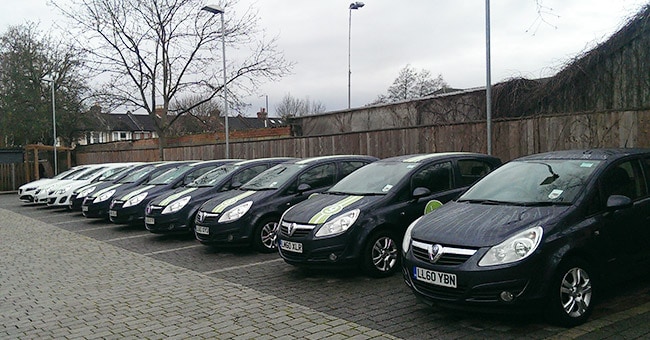 As many fleet owners will already know, the BVRLA is the trade body for the vehicle rental and leasing sector and this year they have announced the challenges and opportunities for motor fleets. Luckily for fleet owners, they have predicted that in 2015 there will be growth within the industry, and in a recent interview with Fleet World, Gerry Keaney, chief executive of the BVRLA, spoke of his predictions for the fleet industry. We have previously written a blog about how fleets will change in the future however these are some changes that we are seeing here and now.
As many fleet owners will already know, the BVRLA is the trade body for the vehicle rental and leasing sector and this year they have announced the challenges and opportunities for motor fleets. Luckily for fleet owners, they have predicted that in 2015 there will be growth within the industry, and in a recent interview with Fleet World, Gerry Keaney, chief executive of the BVRLA, spoke of his predictions for the fleet industry. We have previously written a blog about how fleets will change in the future however these are some changes that we are seeing here and now.
He said: “The industry performed well in 2014, with the association seeing a further increase in membership and fleet sizes across nearly all sectors. Road transport is rising up the government agenda, and the good news is that the fleet industry has never had a more influential voice in Whitehall. 2015 will have its challenges and election years are always hard to predict, but we believe that this will be another successful year for the vehicle rental and leasing industry.”
“The upcoming General Election is widely expected to be even closer than that of 2010, with most political analysts saying it is too close to call. This raises the prospect of another coalition being formed, which is likely to result in an extra period of political and economic uncertainty. Businesses will also be waiting anxiously to see how our next government decides to implement the required austerity packages of tax measures and spending cuts. On a more positive note, the launch of Highways England and a new roads watchdog and passenger champion suggests that road users will have much greater voice within government going forward.”
Even though fleet managers have been concerned over the state of the UK’s roads in the past, in 2014 the government announced that they were investing billions of pounds into some of the busiest roads across the country. Furthermore, the Dart Charge system was put into place last year which has helped save fleets up to a third on crossing charges as well as reduce wait times. Over one thousand fleets have already signed up for Dart Charge and work should be finished on the project in the spring of 2015.
But what about the future of leased vehicles? Keaney said: “Within the leasing sector, the BVRLA expects the strong business confidence from 2014 to continue this year. Most members expect conditions within the wider economy and the fleet leasing sector to improve in 2015, though they remain concerned about profit margins. In the business-to-business environment, we expect to see year-on-year growth of 5% for car leasing, with an-ever increasing market share from the lower medium, dual-purpose and multi-purpose car segments.
“Growth will be even higher in the van leasing market, which the association expects to maintain the 10% year-on-year increase seen in 2014.
“We expect to see average CO2 emissions for the lease fleet fall below 120g/km for the first time in 2015 and predict a continued trickle away from diesel to small engine petrol or hybrid cars.”
This reduction in emissions from leased fleets could be due to news that diesel vehicles are more harmful to the environment that previously thought. In fact, the Mayor of Paris is already planning on banning on all diesel-powered vehicles by 2020, and many assume that London will do the same.
In general, the fleet industry has seen a huge amount of interest in ultra-low emission vehicles recently, especially as the government is giving out grants to those who are purchasing such vehicles. The popularity of ultra-low emissions vehicles therefore looks set to increase in the future, with a number of fleet managers already investing in electric and hybrid vehicles.
Discussing ultra-low emissions vehicles Keaney said: “The ultra-low emission vehicle (ULEV) market received a much-needed boost in 2014, with the number of plug-in-grant eligible registrations passing the 10,000 barrier as predicted. Despite the recent fall in petrol prices, we expect the number of ULEVs to accelerate again as more new plug-in electric models are launched and customers learn about their practicality and cost-effectiveness for many applications. We predict the extra £200m in funding allocated by the government last year – for up to 50,000 more plug-in car grants – could be exhausted by July 2016.”
With all this positive news, fleet owners should be looking forward to this year which is set to feature numerous changes and exciting new ventures. However, with the market starting to lean towards ultra-low emission vehicles and the General Election on the horizon we are sure that fleet managers will still have to stay on their toes!
